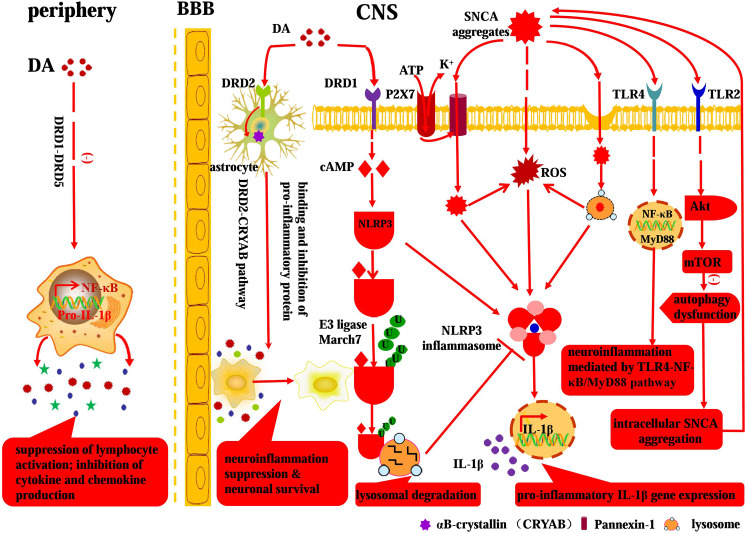Fig. 3.
Involvement of DA and SNCA in neuroinflammation: a crosstalk between neural and immune system. Peripheral DA can modulate the immune network via DR (DRD1–DRD5), leading to the inhibition of cytokine and chemokine production, interruption of lymphocyte activation, and attenuation of inflammation intensity. While the anti-inflammatory effect of DA in CNS is mediated by the DRD2–CRYAB pathway and DRD1–cAMP–NLRP3/autophagy–lysosome pathway. Extracellular SNCA aggregates can be endocytosed or internalized via receptor independent and receptor-mediated patterns, respectively. In particular, the endocytosed SNCA aggregates can directly and indirectly induce NLRP3 inflammasome activation and subsequent pro-inflammatory IL-1β gene expression. Moreover, the SNCA aggregates can act on specific TLR-mediated pro-inflammatory signaling pathways (e.g., TLR2–Akt–mTOR&TLR4–NF-κB), thus resulting in pervasive SNCA accumulation, persistent neuroinflammation, and ultimate dopaminergic neuron death in PD

